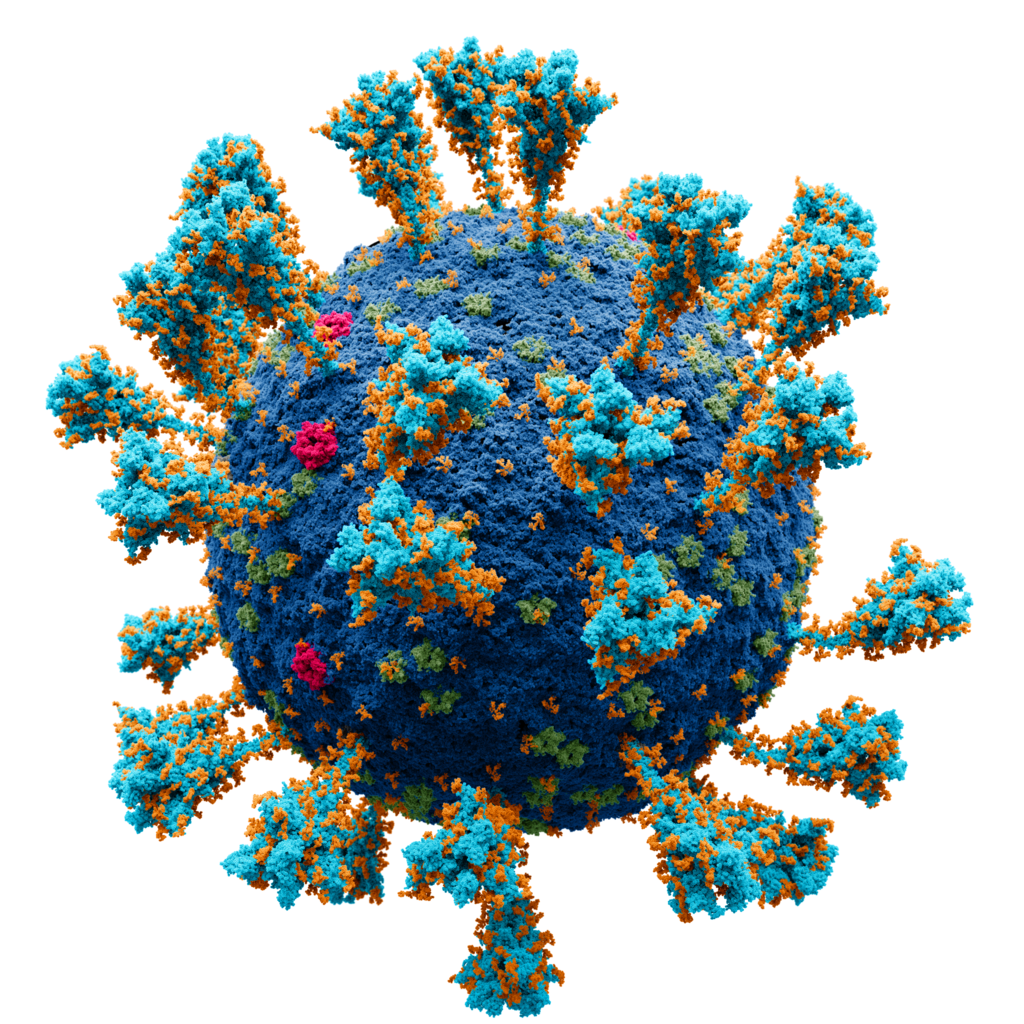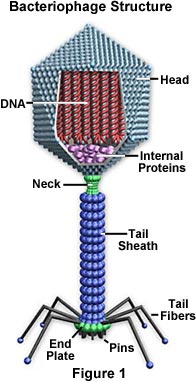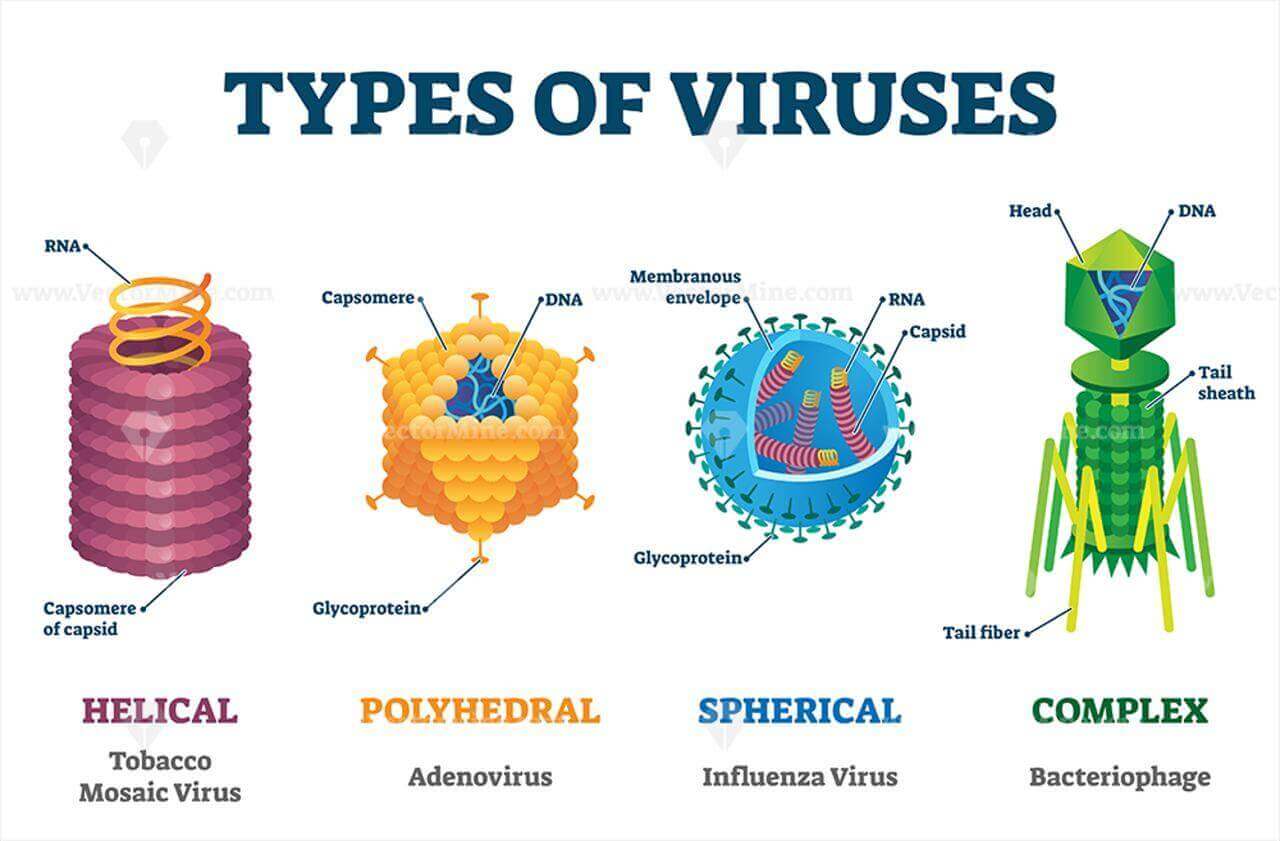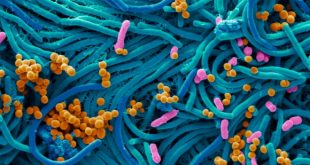Viruses are the smallest microbes on the planet. They are said to be so small that 500 million rhinoviruses (the causative agents of the common cold) could fit on the head of a pin. They are distinct in that they are only alive and capable of multiplying within the cells of other living things. The cell in which they multiply is known as the host cell.
What is Virus?
-

Scientifically accurate atomic model of coronavirus(SARS-CoV-2).Source: microbenotes
A virus is an ultramicroscopic agent that can only reproduce in living cells and spreads through infection. The majority of viruses can only be observed under an electron microscope because they are tiny, obligatory intracellular particles that need to infect and take over a host cell in order to multiply. This is due to the fact that they lack the chemical machinery needed to synthesize big molecules and produce energy. Consequently, viruses need to locate a suitable host cell in which to proliferate. All living cells possess RNA and DNA, have the ability to perform chemical processes, and are capable of self-replication. Only the cellular apparatus of other creatures can be used by viruses in order to proliferate. As a result, viruses are only considered to be living when they reproduce within the host cells they infect. Viruses are parasites of other types of organisms in this respect.
The Components of Viruses
- Naked viruses are made up of a protein capsid and a nucleic acid genome (either DNA or RNA). On one of the capsids, there are depictions of capsomere units. On the capsid, spikes could be visible.
- The nucleocapsid of viruses with an envelope is encased in the envelope. Spikes may be typically present.
Discovery of viruses
- The concept of viruses dates back to the late 19th century when a Dutch microbiologist, Martinus Beijerinck, first proposed the idea of a contagium vivum fluidum, or a “living fluid” that could infect plants.
- It wasn’t until the 20th century that viruses were officially discovered and characterized.
- In the early 1930s, a British bacteriologist, Wendell Stanley, succeeded in isolating the Tobacco Mosaic Virus (TMV) and showed that it was a particle composed of protein and RNA. This marked the first time a virus had been successfully isolated and identified, and it paved the way for future research into the nature of viruses.
- In the 1940s and 1950s, electron microscopy became available, allowing scientists to see the physical structure of viruses for the first time. This was a turning point in the understanding of viruses, as the images revealed a wide range of shapes and sizes.
- As the study of viruses continued, it became apparent that viruses could cause a wide range of diseases in humans, animals, and plants.
- The discovery of these diseases has led to a more in-depth understanding of the mechanisms by which viruses infect cells and cause disease.
- In recent years, advancements in genetic engineering and biotechnology have allowed scientists to manipulate viruses to create vaccines, gene therapies, and other medical treatments.
Viral size
Electron microscopy is used to measure viral sizes. The sizes of many viruses vary widely. Some of the larger viruses, such as the vaccinia virus, are roughly the same size as some extremely small bacteria, despite the fact that most are considerably smaller than bacteria (such as the mycoplasmas, rickettsias, and chlamydias). The size of viruses varies from 20 to 1000 nm.
General Characteristics of Viruses
- Viruses can be seen as either incredibly complicated collections of inanimate substances or extraordinarily straightforward living organisms, depending on one’s point of view.
- In addition to a protein coat and one form of nucleic acid (DNA or RNA), viruses may also have an envelope made of lipids, proteins, and carbohydrates.
- Viruses must exist inside cells as parasites. They reproduce by inducing the production of specific components that can spread the viral nucleic acid to new cells via the host cell’s manufacturing machinery.
- The range of host cells in which a virus can replicate is referred to as the host range.
- Most viruses only affect particular cell types within a single host species.
- The exact attachment location on the host cell’s surface and the availability of host cellular resources dictates the host range.
- The size of a virus is measured using electron microscopy.
- The size of viruses varies from 20 to 1000 nm.
Viral Structure

Nucleic Acid
- The nucleic acid in viruses can be single- or double-stranded, linear, or circular, or it can be broken up into multiple independent molecules. Viruses can only contain one of these two molecules, never both.
- In viruses, nucleic acid makes up anywhere between 1% and 50% of the total protein content.
Capsid
- A virus’s capsid is the protein sheath that surrounds its nucleic acid.
- The subunits of the capsid, called capsomeres, can be many types of proteins or just one.
Envelope
- Some viruses have an envelope made of lipids, proteins, and carbohydrates that surrounds the capsid.
- Spiks—complexes of proteins and carbohydrates—cover some envelopes.
Genome
- Viral genomes are made up of either DNA or RNA, never both.
DNA and RNA molecules can be linear or circular, double or single-stranded, segmented (made up of several bits of nucleic acid), or non-segmented.
As the word “genomic segment” is used for both nomenclature principles and historical reasons, its meaning may be unclear. In the strictest sense, a genome segment is a discrete, isolated bit of nucleic acid that is a part of the larger viral genome. For instance, the eight ssRNA segments that make up the influenza A virus’s segmented genome.
General Morphology
- Long rod-like helical viruses (like the Ebola virus) have hollow cylinder capsids that enclose nucleic acids.
- Many-sided polyhedral viruses, like the adenovirus, exist. The capsid is typically an icosahedron.
- A protective envelope surrounds enveloped viruses, which are approximately spherical but quite pleomorphic. There are also encased polyhedral viruses and enveloped helical viruses, such as the influenza virus (for example, Simplexvirus).
- Viral organisms are complicated structures. For instance, a helical tail is attached to the polyhedral capsid of several bacteriophages.
Taxonomy of Viruses
- Viral classification is based on the nucleic acid type, replication method, and shape.
- Names of the virus genus and family both end in “virus.”
- A group of viruses with the same genetic makeup and ecological habitat is referred to as a viral species.
-

Types of viruses. Source: Microbenotes
There are 2 types of viruses
- DNA virus
- RNA virus
DNA Viruses
Many viruses have linear or segmented DNA genomes, whether they are single-stranded (ss) or double-stranded (ds). The genomes are copied directly from DNA to DNA via DNA polymerase, which necessitates that the majority of DNA viruses replicate in the nucleus of the host cell. The poxviruses are an exception since they must possess the gene for their own DNA polymerase because they replicate in the cytoplasm of the host.
RNA Viruses
ssRNA or dsRNA genomes, which are replicated via direct RNA-to-RNA copying, are present in a sizable number of viruses. The genomes can be segmented or linear. Some single-stranded viruses, like picornaviruses and coronaviruses, have messenger RNA as their RNA genome (mRNA). Positive-strand RNA viruses are the ones in question (strand). Negative-strand RNA genomes are those of other ssRNA viruses, such as the orthomyxoviruses and paramyxoviruses, that have RNA strands complementary to an mRNA (strand). Despite typically being classified with RNA viruses, retroviruses replicate indirectly via a DNA intermediary (RNA-to-DNA-to-RNA). Two copies of strand RNA are present in every virion. A reverse transcriptase enzyme carried by the virion will be used to create a DNA intermediate throughout the infection process. Generally speaking, RNA virus genomes are smaller than DNA virus genomes and rely more on the proteins and enzymes of the host cell for reproduction.
References
- Tortora G. J. Funke B. R. & Case C. L. (2016). Microbiology: an introduction (Twelfth). Pearson.
- Pommerville, J. C., & Pommerville, J. C. (2004). Alcamo’s fundamentals of microbiology. Jones & Bartlett Learning.
 Plantlet The Blogging Platform of Department of Botany, University of Dhaka
Plantlet The Blogging Platform of Department of Botany, University of Dhaka






you are truly a just right webmaster. The site loading speed is incredible. It kind of feels that you’re doing any distinctive trick. In addition, The contents are masterwork. you have done a great activity in this matter!
Fantastic read! I was especially impressed by the depth provided on the topic, offering a perspective I hadn’t considered. Your insight adds significant value to the conversation. For future articles, it would be fascinating to explore more to dive deeper into this subject. Could you also clarify more about the topic? It caught my interest, and I’d love to understand more about it. Keep up the excellent work!
Fantastic read! I was especially impressed by the depth provided on the topic, offering a perspective I hadn’t considered. Your insight adds significant value to the conversation. For future articles, it would be fascinating to explore more to dive deeper into this subject. Could you also clarify more about the topic? It caught my interest, and I’d love to understand more about it. Keep up the excellent work!